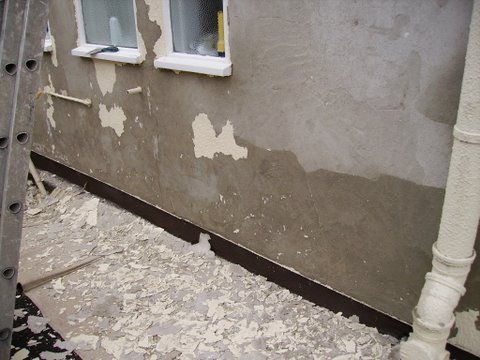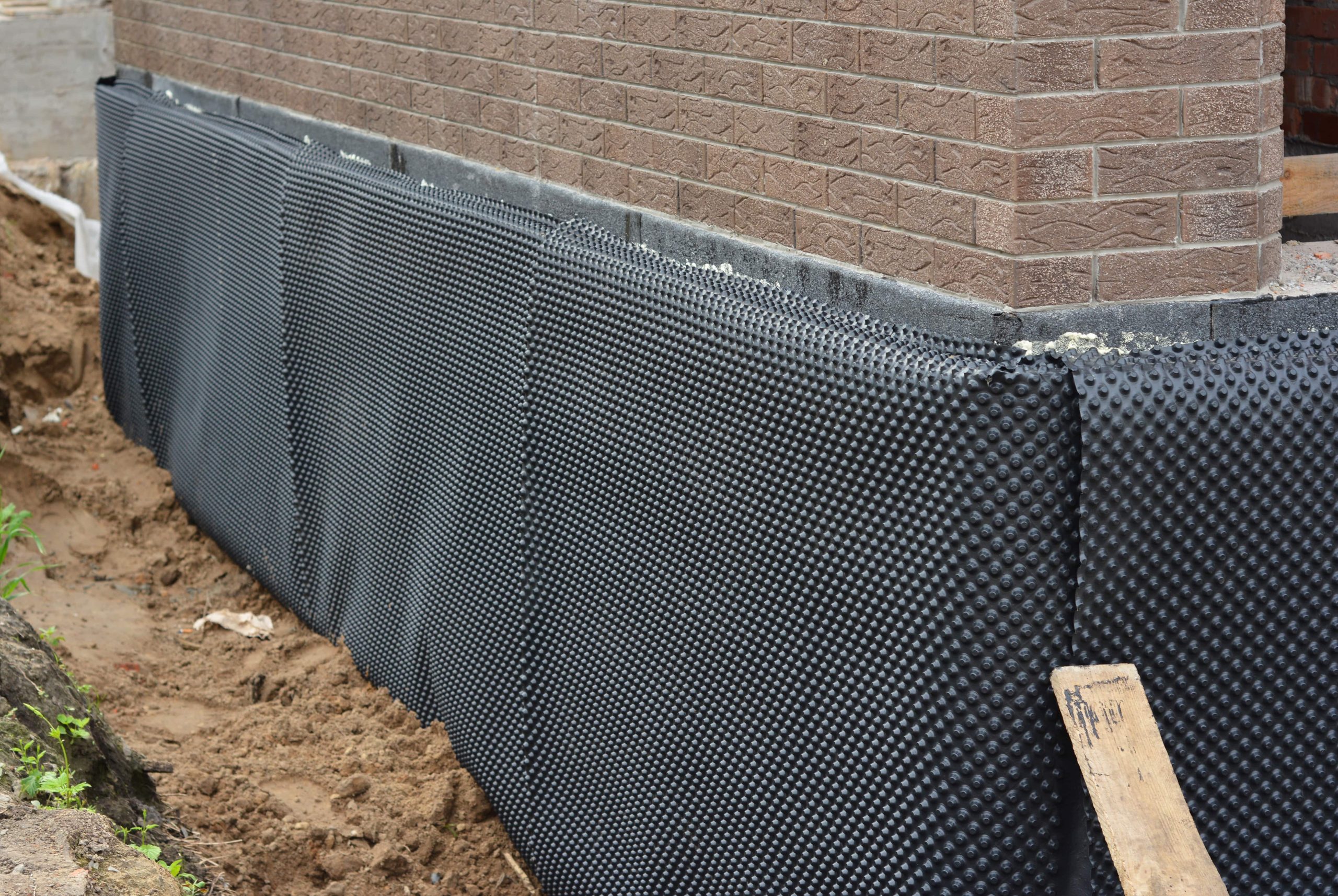Landlord's checklist to damp proofing newcastle solutions
Landlord's checklist to damp proofing newcastle solutions
Blog Article
Discovering the Different Strategies and Solutions for Effective Damp Proofing
Wetness in structures poses considerable challenges to both architectural integrity and interior air high quality. Various strategies and services have arised to fight this prevalent concern. From typical damp-proof membrane layers to cutting-edge chemical treatments, each approach provides unique advantages. Comprehending these choices is necessary for efficient dampness control. Selecting the ideal service depends on particular building problems and requirements, prompting more expedition into the most reliable moist proofing techniques available.
Understanding the Sources Of Moisture
Moisture can emerge from numerous sources, recognizing these causes is important for reliable remediation. Commonly, dampness stems from three primary resources: rising wet, passing through wet, and condensation. Increasing damp takes place when groundwater travels upwards via permeable materials, such as brick or rock, commonly because of a lack of an efficient obstacle (damp proofing newcastle). Penetrating wet is commonly brought on by external elements, consisting of roofing leakages, malfunctioning gutters, or harmed wall surfaces, permitting water to penetrate a property. Condensation, on the various other hand, results from excess wetness airborne, usually intensified by bad air flow and temperature level distinctions, leading to water droplets developing on surface areas. Recognizing these underlying concerns is essential, as each kind of dampness requires a tailored approach for removal. Appropriate analysis aids in determining the most efficient options, eventually securing the structural stability of a structure and improving interior air top quality
Traditional Damp-Proof Membranes

Chemical Damp-Proofing Solutions
Chemical damp-proofing solutions supply an ingenious technique to stop moisture invasion in buildings. These methods commonly entail the application of liquid chemicals that permeate masonry and develop a barrier against increasing moist. Frequently used chemicals include silanes, siloxanes, and other water-repellent agents that react with surface area products to produce a hydrophobic layer.The application process usually requires drilling openings right into the walls, infusing the chemical remedy, and allowing it to treat. This technique is especially helpful for older structures where conventional damp-proof membrane layers might be unwise. Chemical damp-proofing can be much less turbulent and much more cost-effective than considerable restoration projects.While reliable, these options depend on correct application and environmental conditions for peak efficiency. damp specialist newcastle. Routine upkeep and monitoring are important to guarantee the durability of the damp-proofing treatment. Overall, chemical damp-proofing represents a functional alternative for securing buildings against moisture-related damage
Dental Caries Wall Surface Building And Construction Techniques
Cavity wall building techniques supply numerous advantages, specifically in wetness control and power effectiveness. By including an air void in between 2 layers of masonry, these wall surfaces properly mitigate water access while enhancing insulation. This combination not just secures frameworks from moisture however additionally adds to reduced energy consumption.
Benefits of Dental Caries Wall Surfaces
When considering effective damp proofing approaches, the advantages of cavity wall surfaces stand out plainly. Tooth cavity walls include two different layers, creating an air void that successfully reduces wetness infiltration. This style decreases the threat of wetness, as the external wall surface works as a barrier against rain and water ingress. Additionally, dental caries walls enhance thermal insulation, which adds to energy effectiveness by decreasing heat loss. They also supply sound insulation, assisting to develop a quieter indoor atmosphere. The air gap enables for ventilation, which aids in dampness control and reduces the likelihood of mold and mildew development. These benefits not only enhance the overall convenience of a structure but also contribute to its durability and architectural stability.
Moisture Control Methods
Reliable moisture control techniques are crucial in tooth cavity wall surface construction to guarantee long-lasting security against dampness. One main technique involves the unification of weep holes, which promote water drainage from the cavity, protecting against accumulation. Furthermore, using breathable membrane layers can assist handle moisture degrees while allowing trapped vapor to get away. Correct positioning of insulation is additionally vital, as it needs to not block water drainage paths. Furthermore, making certain that the external fallen leaves of the cavity wall surface are constructed with waterproof products improves general sturdiness. Routine maintenance checks are necessary to identify any kind of clogs or damages early, protecting the framework's stability. Inevitably, a mix of these strategies forms a durable defense against moisture breach in tooth cavity wall surfaces.
Insulation and Power Efficiency
Insulation plays a crucial role in improving power efficiency within cavity wall construction. By incorporating protecting products, these wall surfaces produce a thermal obstacle get more info that decreases warmth loss and minimizes energy intake. Efficient insulation not just aids preserve a secure indoor temperature but additionally mitigates the risk of moisture, as it avoids condensation within the wall surface dental caries. Various techniques, such as using inflexible foam boards or mineral woollen, can be utilized to achieve optimal insulation performance. Furthermore, correct setup is necessary to ensure that spaces and spaces are lessened, which can otherwise jeopardize power performance. Eventually, a well-insulated tooth cavity wall adds considerably to overall sustainability and reduces heating & cooling costs for house owners.
External Damp Proofing Techniques
Exterior moist proofing methods are vital for protecting frameworks from moisture seepage. Two efficient methods consist of the application of water-proof membranes and the installment of French drains pipes. These remedies help mitigate water accumulation and protect the stability of buildings.
Waterproof Membrane Layer Application
While different approaches exist for stopping dampness ingress, the application of water-proof membranes remains a highly effective outside damp proofing strategy. These membranes are commonly made from materials such as polyethylene, rubber, or modified bitumen, offering a durable obstacle versus water infiltration. The setup procedure entails using the membrane to the outside surface areas of foundations or wall surfaces, guaranteeing complete coverage to stop leaks. Appropriate adhesion and sealing at joints are essential to maximizing performance. Water resistant membranes can be used in different forms, consisting of fluid layers and sheet membranes, permitting for flexibility based upon the certain demands of the framework. This technique not only shields structures from wetness yet also enhances their longevity and structural integrity.
French Drainpipe Setup
One efficient method for taking care of groundwater and protecting against wetness accumulation around a structure's foundation is the installment of a French drain. This drain system is composed of a trench full of gravel and a perforated pipe that reroutes surface area water away from the foundation. Correct installation requires mindful preparation, making sure that the drainpipe inclines far from the structure to assist in excellent water circulation. Furthermore, the place of the drainpipe is crucial; it ought to be placed in areas prone to pooling or excess wetness. Regular maintenance, including clearing debris from the crushed rock and making sure the pipe remains unobstructed, is essential for long-term performance. Inevitably, a well-installed French drainpipe can substantially lower the risk of water-related concerns in basements and structures.
Inside Waterproofing Strategies
Inside waterproofing techniques are important for safeguarding a building's inside from wetness seepage and potential water damage. These methods usually include the application of customized products and strategies developed to produce a wetness barrier within the structure. One typical method is making use of water-proof coatings or sealants on wall surfaces and floors, which stop moisture from penetrating surfaces.Additionally, installing indoor drainage systems, such as sump pumps, can effectively handle water build-up in cellars and crawl spaces. Another method entails using vapor barriers, which are mounted to inhibit dampness movement from the ground into living spaces.Moreover, addressing any splits or spaces in wall surfaces or structures with proper sealers ensures a comprehensive defense against water intrusion. By implementing these interior waterproofing techniques, homeowner can significantly decrease the risk of mold and mildew development, structural damage, and various other moisture-related concerns. Correct execution of these techniques is vital for long-term security and structure stability.
Routine Maintenance and Evaluation Practices
Routine upkeep and examination methods are important for guaranteeing the long-term performance of wet proofing solutions in any building. Regular checks enable home proprietors to identify early signs of dampness intrusion, such as peeling off paint, mold growth, and stuffy odors. These indications can signal underlying concerns that call for prompt attention.Inspections should be carried out at the very least yearly, concentrating on vulnerable locations like basements, crawl areas, and exterior walls. During these evaluations, homeowner ought to take a look at sealants, water drainage systems, and ventilation to confirm they work correctly.Additionally, preserving gutters and downspouts is essential, as clogged systems can lead to water build-up near the foundation. Applying a normal upkeep timetable, along with timely fixings, can substantially extend the life expectancy of damp proofing measures and secure the structural integrity of the building. Proactive steps eventually add to the general health and wellness of the living atmosphere.
Regularly Asked Inquiries
How Much Time Does Damp Proofing Generally Last?
The period of moist proofing efficiency varies, commonly lasting in between 20 to 50 years. Aspects such as application quality, environmental problems, and upkeep methods substantially affect the long life of the wet proofing treatment.

Can I Damp Proof My Home Myself?
The private pondered the feasibility of DIY damp proofing. With proper research study and the appropriate materials, it is possible. Nonetheless, they also recognized the significance of professional assistance to assure resilient performance and prevent future issues.
What Are the Indications of Inefficient Damp Proofing?
Indicators of inefficient wet proofing consist of relentless moldy smells, noticeable mold growth, peeling paint, wet spots on wall surfaces, and wood degeneration - mould removal newcastle. House owners ought to resolve these concerns quickly to protect against more damage and health and wellness concerns
Does Damp Proofing Affect Indoor Air Quality?

Just How Much Does Specialist Damp Proofing Cost?
Professional moist proofing prices vary considerably, normally ranging from $1,000 to $5,000 depending on the residential property's size, the extent of the wet issue, and picked techniques. Each circumstance needs a customized analysis for accurate prices. Generally, dampness stems from three key sources: increasing damp, passing through damp, and condensation. When considering reliable moist proofing approaches, the advantages of tooth cavity walls stand out plainly. External moist proofing approaches are essential for protecting structures from wetness infiltration. While numerous methods exist for stopping moisture access, the application of water-proof membranes stays an extremely reliable exterior moist proofing method. Signs of inadequate damp proofing include consistent moldy smells, visible mold and mildew development, peeling off paint, moist spots on walls, and wood degeneration.
Report this page